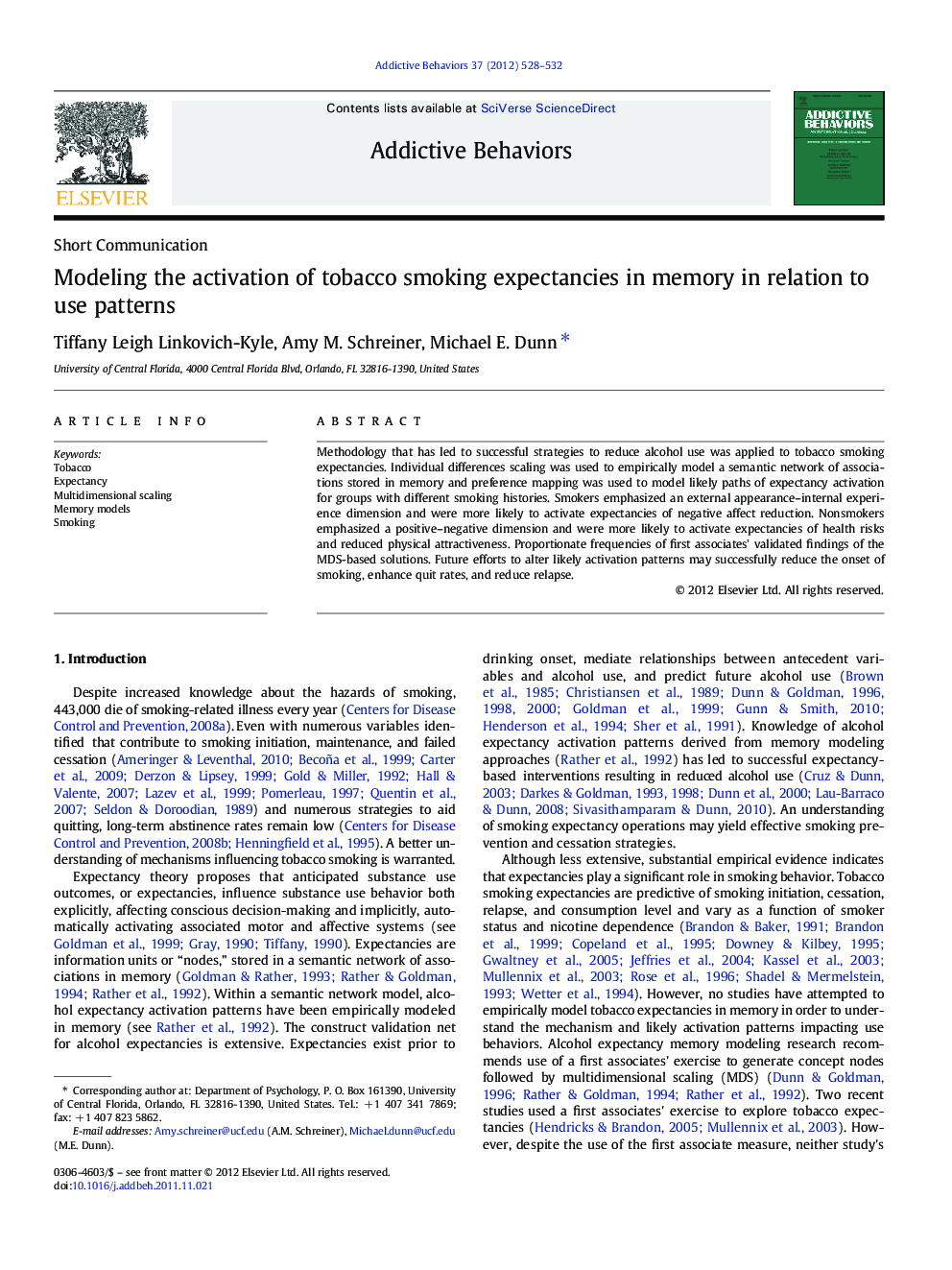| Article ID | Journal | Published Year | Pages | File Type |
|---|---|---|---|---|
| 899152 | Addictive Behaviors | 2012 | 5 Pages |
Methodology that has led to successful strategies to reduce alcohol use was applied to tobacco smoking expectancies. Individual differences scaling was used to empirically model a semantic network of associations stored in memory and preference mapping was used to model likely paths of expectancy activation for groups with different smoking histories. Smokers emphasized an external appearance–internal experience dimension and were more likely to activate expectancies of negative affect reduction. Nonsmokers emphasized a positive–negative dimension and were more likely to activate expectancies of health risks and reduced physical attractiveness. Proportionate frequencies of first associates' validated findings of the MDS-based solutions. Future efforts to alter likely activation patterns may successfully reduce the onset of smoking, enhance quit rates, and reduce relapse.
► Multidimensional scaling used to map tobacco smoking expectancies in memory. ► Different expectancy activation patterns in memory in relation to tobacco use. ► Long-term health consequences highly salient for both smokers and nonsmokers. ► Short-term negative consequence expectancies salient for non-smokers. ► Negative affect reduction and withdrawal relief expectancies salient for smokers.
